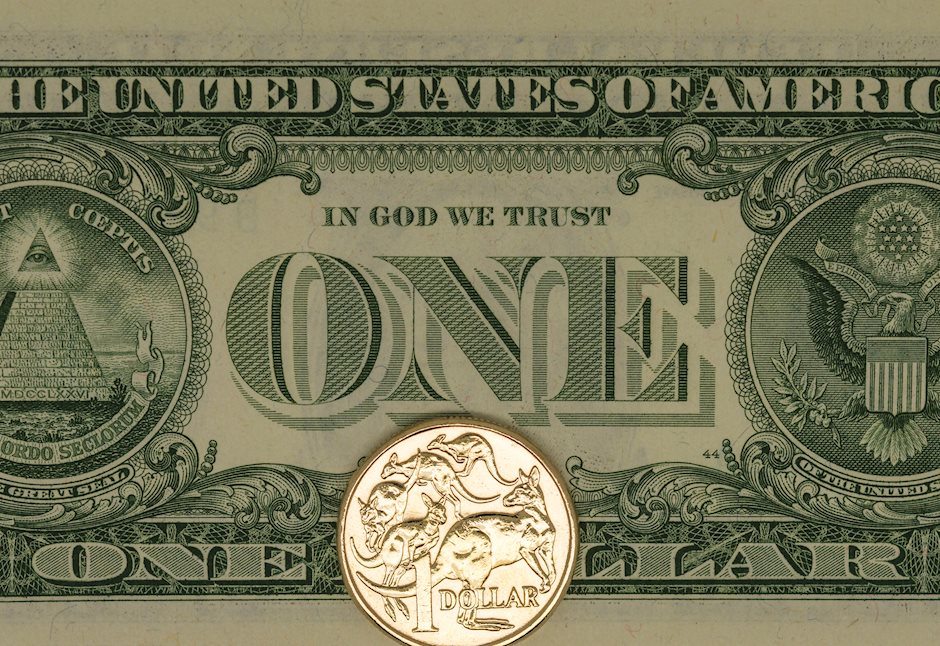AUD/USD holds below 0.6750 on US Dollar recovery
- AUD/USD trades on a weaker note around 0.6745 in Monday’s early Asian session.
- US NFP rose 206K in June versus 218,000 prior, better than the estimated.
- The AUD strength holds amid stronger Australian economic data.

The AUD/USD pair edges lower to 0.6745, snapping the four-day winning streak during the early Asian session on Monday. The renewed US Dollar (USD) demand amid the cautious mood weighs on the pair. In the absence of any top-tier data releases from Australia and the US on Monday, the USD price dynamic will be the main driver for the AUD/USD pair.
US employment growth slowed in June, according to the US Bureau of Labour Statistics (BLS) on Friday. Nonfarm Payrolls (NFP) in the US increased 206K in June, followed by the 218,000 rise (revised from 272,000) recorded in May. This figure came in above the market expectation of 190,000.
Meanwhile, the Unemployment Rate ticked higher to 4.1% in June from 4% in May. The wage inflation, as measured by the change in the Average Hourly Earnings, dropped to 3.9% YoY in June from 4.1% in the previous reading, in line with market expectations.
The recent employment data have raised the chance of rate cuts from the US Federal Reserve (Fed) in September, with the markets pricing 77% odds, up from 70% before the report. The expectation of a Fed rate cut is likely to exert some selling pressure on the Greenback in the near term and might cap the downside for the pair.
On the Aussie front, the elevated inflation in Australia, along with a stronger Retail Sales and Services PMI, prompted the Reserve Bank of Australia (RBA) to remain hawkish. This, in turn, might continue to underpin the Australian Dollar (AUD) against the USD.
Australian Dollar FAQs
One of the most significant factors for the Australian Dollar (AUD) is the level of interest rates set by the Reserve Bank of Australia (RBA). Because Australia is a resource-rich country another key driver is the price of its biggest export, Iron Ore. The health of the Chinese economy, its largest trading partner, is a factor, as well as inflation in Australia, its growth rate and Trade Balance. Market sentiment – whether investors are taking on more risky assets (risk-on) or seeking safe-havens (risk-off) – is also a factor, with risk-on positive for AUD.
The Reserve Bank of Australia (RBA) influences the Australian Dollar (AUD) by setting the level of interest rates that Australian banks can lend to each other. This influences the level of interest rates in the economy as a whole. The main goal of the RBA is to maintain a stable inflation rate of 2-3% by adjusting interest rates up or down. Relatively high interest rates compared to other major central banks support the AUD, and the opposite for relatively low. The RBA can also use quantitative easing and tightening to influence credit conditions, with the former AUD-negative and the latter AUD-positive.
China is Australia’s largest trading partner so the health of the Chinese economy is a major influence on the value of the Australian Dollar (AUD). When the Chinese economy is doing well it purchases more raw materials, goods and services from Australia, lifting demand for the AUD, and pushing up its value. The opposite is the case when the Chinese economy is not growing as fast as expected. Positive or negative surprises in Chinese growth data, therefore, often have a direct impact on the Australian Dollar and its pairs.
Iron Ore is Australia’s largest export, accounting for $118 billion a year according to data from 2021, with China as its primary destination. The price of Iron Ore, therefore, can be a driver of the Australian Dollar. Generally, if the price of Iron Ore rises, AUD also goes up, as aggregate demand for the currency increases. The opposite is the case if the price of Iron Ore falls. Higher Iron Ore prices also tend to result in a greater likelihood of a positive Trade Balance for Australia, which is also positive of the AUD.
The Trade Balance, which is the difference between what a country earns from its exports versus what it pays for its imports, is another factor that can influence the value of the Australian Dollar. If Australia produces highly sought after exports, then its currency will gain in value purely from the surplus demand created from foreign buyers seeking to purchase its exports versus what it spends to purchase imports. Therefore, a positive net Trade Balance strengthens the AUD, with the opposite effect if the Trade Balance is negative.
Author

Lallalit Srijandorn
FXStreet
Lallalit Srijandorn is a Parisian at heart. She has lived in France since 2019 and now becomes a digital entrepreneur based in Paris and Bangkok.

















